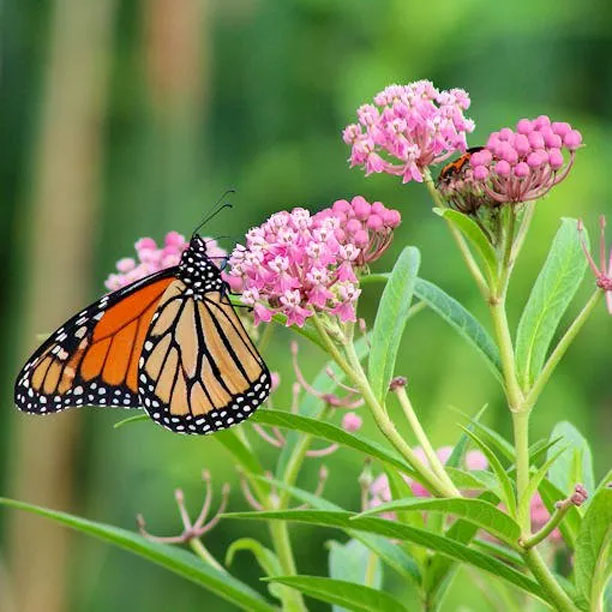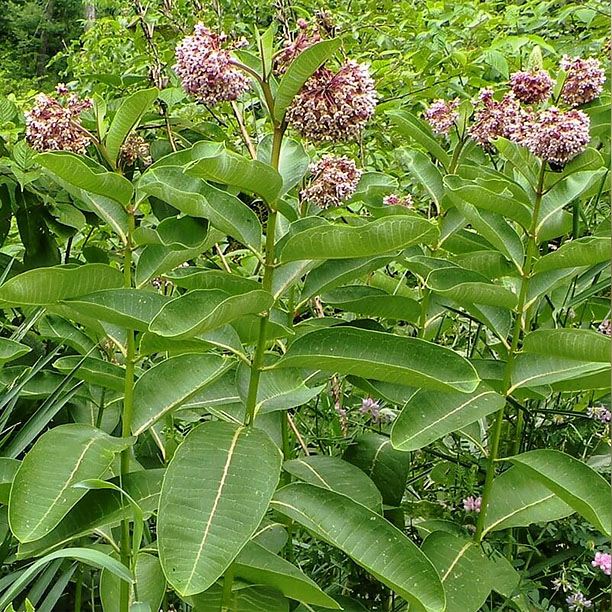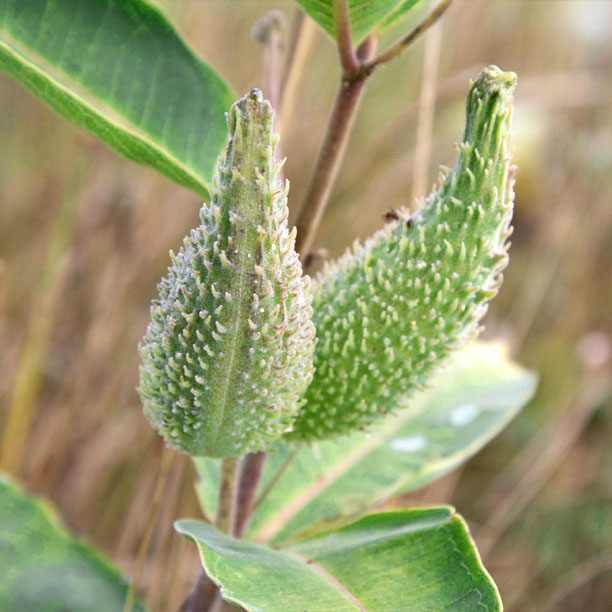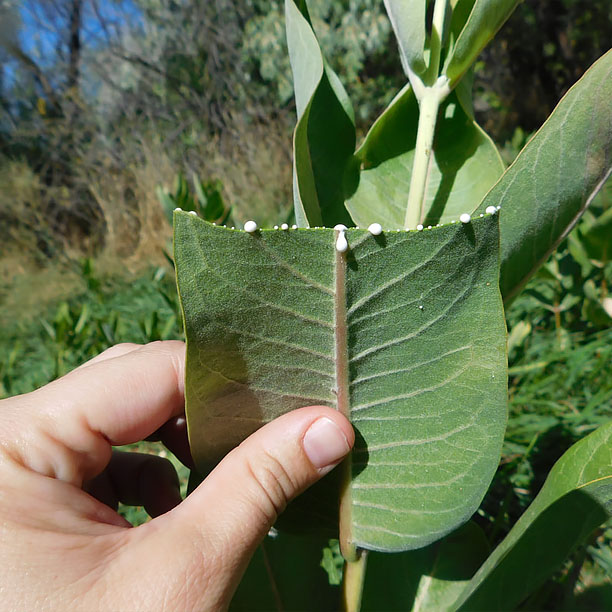Common Milkweed
How To Identify
Common Milkweed is a native perennial of the eastern United States and southern Canada, though it is found most commonly in the northeast and the Midwest. Growing 2-4 feet tall, common milkweed leaves are broad and thick, arranged in opposite pairs on the stem and with fuzzy undersides. The leaves and stem bleed a milky-white sap when broken or cut. They blossom with pale pink or violet flowers, arranged in almost spherical umbels that are very fragrant. They produce non-edible large spindle-shaped fruit that are bumpy and rough filled with a downy silk and seeds.
Milkweed has grown in popularity and gained the spotlight as an important plant for Monarch butterflies. These plants also support many other pollinators vital to our food chain.
Milkweed produces a milky substance that contains cardiac glycosides. Cardiac glycoside substances pose a threat to sheep, cattle, horses and potentially humans. If not prepared correctly, milkweed can be toxic to humans. It also has a lookalike called dogbane which is lethally poisonous. Because of these two reasons, we recommend doing your own independent research.




Benefits
As well as its benefits to butterflies and over 400 different pollinators, milkweed was used by Native Americans who taught early European settlers how to properly cook milkweed so that it could be safely eaten. The milky white sap was applied topically to remove warts, and the roots were chewed to cure dysentery. Infusions of the roots and leaves were taken to suppress coughs and used to treat typhus fever and asthma.
How To Find
Common milkweed can be found in upland fields, woodland margins and disturbed areas such as roadsides. It can grow to be five feet tall, and it grows clusters of flowers that are typically shades of pink and purple. They may flower between late spring and the end of summer.
Gathering
Gathering the milkweed floss is done in the late summer or fall after the flower pods have dried. The sap can be aquired directly from the plant and used on location.
How To Use
As well as being a beautiful addition to the landscape, the “silk” found in milkweed pods has had many historical uses. The plant’s toxicity means that utilizing it for medicinal purposes requires very specific identification, harvesting at a particular time and specific processing. If you are considering using this medicinally, please do independent research.
Our only use for the milkweed plant is to use the dried pod fibers as a flash tinder for making camp fires.
Historical Uses
The tough, stringy fibers from the stem of the milkweed have been used to twist into strong twine and rope, or woven into coarse fabric.
The white floss, attached to milkweed’s seeds, was used to stuff pillows, mattresses, and quilts, and is still carried by some as tinder to start fires.
During World War II, the regular material used to stuff life jackets was not available due to the war with Japan, so milkweed floss was collected and used as a substitute. The buoyancy is about six times that of cork.
The floss is also used to clean up oil spills. The seed pod fibers are said to absorb more than four times the amount of oil compared to the plastic-based materials currently used during oil spill cleanup projects
Preservation
The only preservation that we would recommend is to collect and store the dried pod fibers in a dry container for future use as a flash tinder for making camp fires.